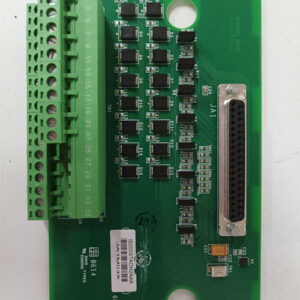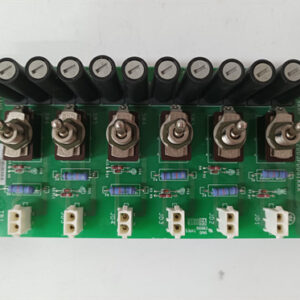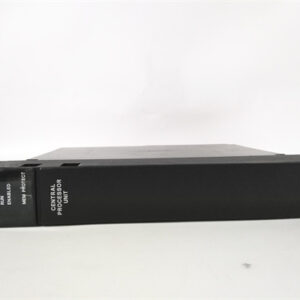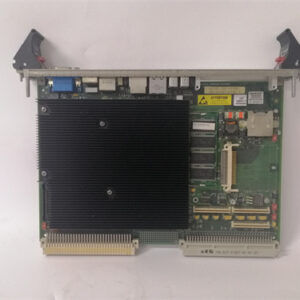الوصف
GE DS200DSPCH1ADA DCS PLC Module
Product Name:
GE DS200DSPCH1ADA DCS PLC Module
Product Description:
The GE DS200DSPCH1ADA is a Digital Signal Processing Communication Card used in Distributed Control Systems (DCS) or Programmable Logic Controllers (PLC) in industrial automation. It is part of GE’s Mark VIe control system, designed for high-performance, flexible, and reliable control in power generation, oil & gas, and process industries. This module is specifically used for the communication and processing of digital signals, providing real-time control and processing for complex industrial operations.
The module plays a critical role in systems requiring high-speed data processing and communications with other modules or field devices, offering enhanced capabilities in areas such as safety, diagnostics, and real-time monitoring. It can be integrated into the control systems used in various applications like turbine control, plant automation, and process monitoring.
Product Parameters:
- Model: GE DS200DSPCH1ADA
- Type: Digital Signal Processing Communication Module
- Manufacturer: General Electric (GE)
- System Compatibility: Compatible with GE Mark VIe and Mark V control systems
- Power Supply:
- Nominal Voltage: Typically 24V DC (varies by configuration)
- Current Consumption: Approx. 0.7 – 1.5A depending on configuration and load
- Dimensions:
- Height: 17.8 cm
- Width: 4.8 cm
- Depth: 22.9 cm
- Weight: Approx. 1.5 kg
- Environmental Specifications:
- Operating Temperature: -40°C to 70°C
- Storage Temperature: -40°C to 85°C
- Humidity Range: 5% to 95% (non-condensing)
- Vibration Resistance: Standard industrial-level vibration resistance
- Certifications:
- UL 508 (for industrial control panels)
- CE (Conformité Européenne)
Key Specifications:
-
Processor:
- Digital Signal Processor (DSP) for high-speed signal processing.
- Capable of handling complex mathematical computations for real-time control algorithms in a distributed system.
- Integrated signal processing unit for managing and converting signals in various formats (analog to digital, digital to analog, etc.).
-
Input/Output (I/O):
- Digital Inputs/Outputs: Configurable DI/DO points for various control and monitoring tasks.
- Analog Inputs/Outputs: Provides high-precision analog inputs and outputs for controlling and monitoring variables like temperature, pressure, and flow.
- Field Communication: Can interface with Modbus, Profibus, and Ethernet based communication protocols for interacting with remote sensors and actuators.
-
Communication Protocols:
- Ethernet: For high-speed data transmission and communication with control systems or external devices.
- Serial Communication: Supports RS-232 and RS-485 for industrial serial communications.
- Profinet/Profibus: Allows communication with other industrial devices, especially in automation environments.
-
Control Capabilities:
- Real-time Control: Provides high-speed, real-time processing of digital signals to ensure timely and precise control of industrial processes.
- Control Algorithms: Supports advanced control algorithms such as PID, cascade, and feedforward to optimize process performance.
- Redundant Control: The module can be configured with redundancy to ensure high availability and failover in critical systems.
-
Diagnostics and Monitoring:
- Self-Diagnostics: Includes built-in diagnostics to monitor system health and performance.
- Event Logging: Captures events and alarms for troubleshooting, fault identification, and system optimization.
- Real-time Monitoring: Real-time feedback and monitoring of the communication and processing status.
-
Safety Features:
- The module can support safety-critical functions when integrated with the GE safety systems for SIL 2 or SIL 3 environments (depending on the application).
-
Integration:
- Human-Machine Interface (HMI): Compatible with GE HMI systems for efficient user interface management and process control.
- Software Compatibility: Fully integrated with GE Mark VIe and Mark V system software for system configuration, diagnostics, and monitoring.
- SCADA Integration: Can interface with Supervisory Control and Data Acquisition (SCADA) systems for remote monitoring and control.
Key Features and Advantages:
-
High-Speed Digital Signal Processing:
The DSP capabilities of the DS200DSPCH1ADA module provide fast, real-time processing for complex digital signals, allowing for precise control and monitoring in demanding industrial applications. -
Communication Flexibility:
The module supports a wide range of industrial communication protocols, including Ethernet, Modbus, Profibus, and serial interfaces, enabling seamless integration into existing systems. -
Redundancy and High Availability:
The module can be configured with redundant systems, ensuring that the control system remains operational even in the event of a failure. This is particularly important in critical infrastructure applications. -
Advanced Control Capabilities:
The module is capable of supporting sophisticated control strategies, including PID control, cascade control, and model predictive control, providing precise and efficient control over industrial processes. -
Built-in Diagnostics:
It features self-diagnostic functions, enabling operators to quickly detect and troubleshoot faults, reducing downtime and maintenance costs. -
Safety-Critical Integration:
It can be integrated into safety-critical systems, with support for SIL 2 and SIL 3 certifications for applications requiring high levels of safety. -
Modular Design:
The modular design of the GE DS200DSPCH1ADA allows for easy scalability and system expansion, making it suitable for both small and large-scale automation systems. -
Flexible I/O Configurations:
The module supports a range of I/O options, enabling it to adapt to different process control needs and integrate with a variety of sensors and actuators.
Applications:
The GE DS200DSPCH1ADA DCS PLC Module is ideal for use in industries where digital signal processing, real-time control, and robust communication are required:
- Power Generation: Used in turbine control, plant automation, and energy management.
- Oil & Gas: For managing offshore platforms, refineries, and pipeline systems.
- Chemical Processing: Handles complex process control for continuous chemical reactions and material processing.
- Water Treatment: Integrated into systems for managing water distribution and treatment plants.
- Industrial Automation: Used in various manufacturing processes, including automotive, metals, and pulp & paper.
Conclusion:
The GE DS200DSPCH1ADA DCS PLC module provides high-speed signal processing, reliable communication, and flexible integration for industrial control systems. It is designed to meet the demanding requirements of power generation, oil & gas, and process control industries, offering advanced control capabilities, real-time monitoring, and seamless system integration. Whether used in safety-critical applications or large-scale process automation, the DS200DSPCH1ADA ensures performance, reliability, and scalability in a variety of industrial environments.



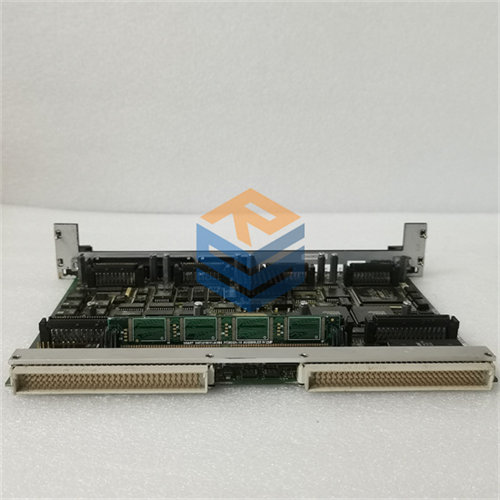



 +86 15340683922
+86 15340683922 +86 15340683922
+86 15340683922